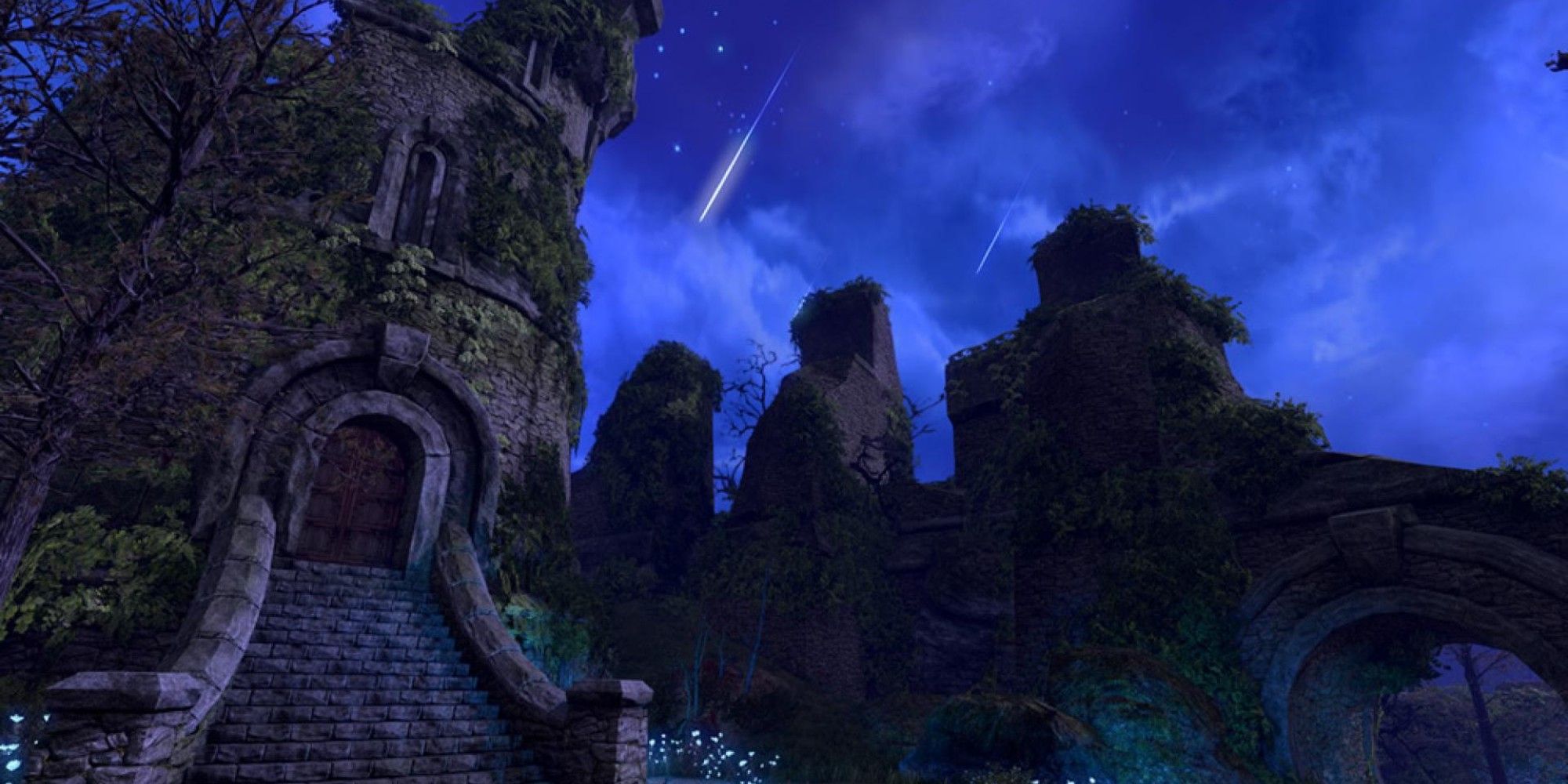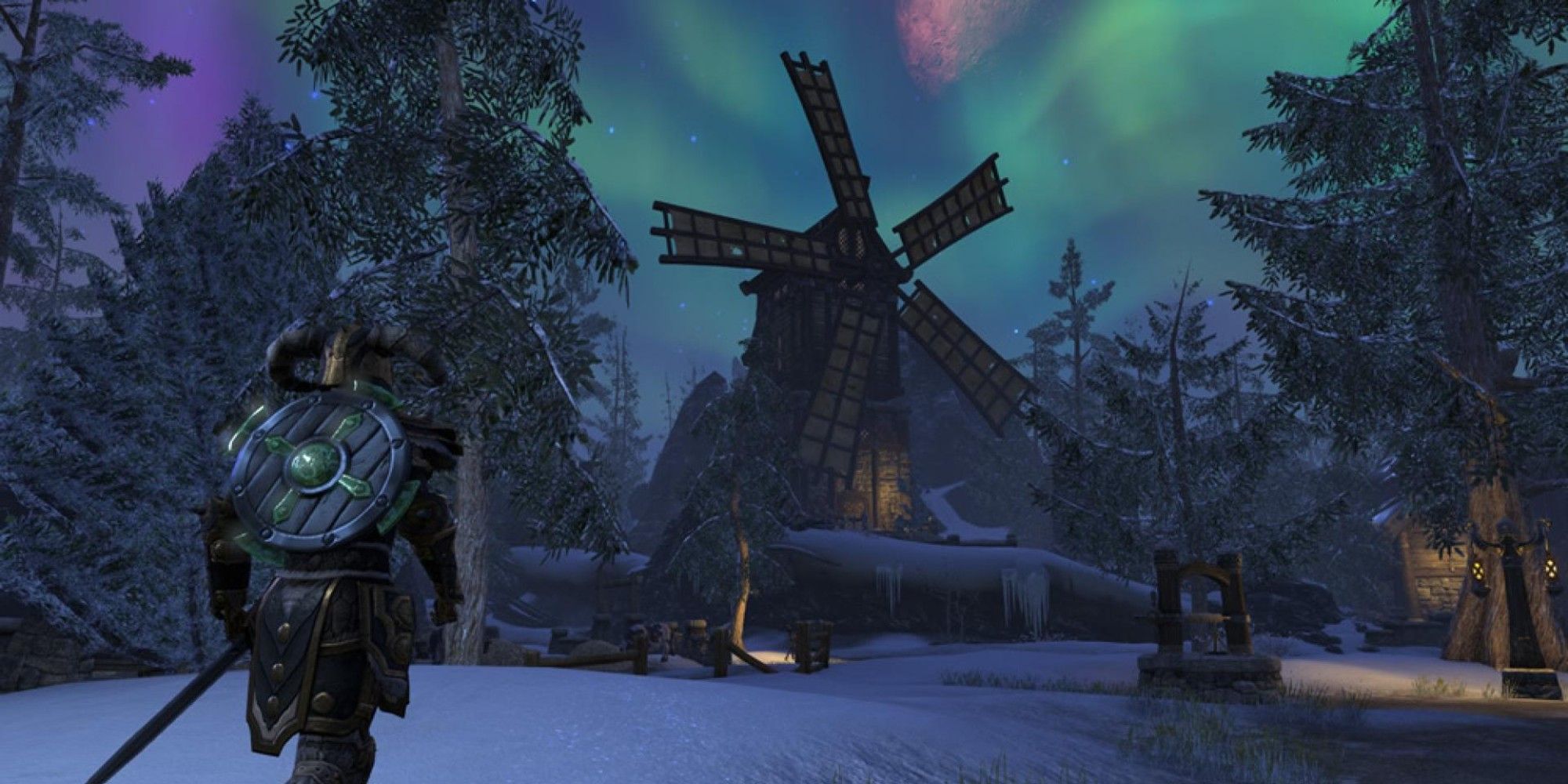The Elder Scrolls series is heavily steeped in lore, but its creation myth is some of weirdest. The lore of the Elder Scrolls universe incorporates all manner of the fantastic - like magic, mystical races, and legendary creatures - and places them into a world that spans continents and planes of existence. Perhaps unsurprisingly for a body of knowledge so vast, The Elder Scrolls also features a deep in-game mythology, and this is what lends so much color and intrigue to its creation myth.
Before diving too deep into the creation of Mundus, the plane of mortal existence in the games, it's important to explain the unique The Elder Scrolls philosophy called CHIM (pronounced "kim"). CHIM is, in essence, the process of a mortal being transcending the mortal plane, achieving something akin to godhood. The final step in achieving CHIM is viewing the Secret Tower of Aurbis, the latter being the universe of The Elder Scrolls. Characters able to achieve CHIM can look at the Tower and transcend reality, while those who fail to hold on to their identity during the process are said to be erased from reality.
Some cultures within The Elder Scrolls universe, such as Elsewyr's Khajiit, have their own religion and therefore their own creation myth. However, what appears to be the most widely accepted version (insofar as one takes into account the biases of Tamriel's inhabitants) involves eight gods, a trickster, and the complex philosophy around CHIM weaving together to form a narrative about the creation of the mortal plane. The sequence of events and their unforeseen consequences paint a picture of one of the weirdest creation myths one might run across.
The Elder Scrolls Creation Myth
Before the creation of the mortal plane, there were eight divinities called the Aedra in the universe of The Elder Scrolls. One of these gods, Lorkhan, attempted to achieve CHIM, but he failed, as it's not possible to transcend something that doesn't yet exist. Some writing in The Elder Scrolls, including from notable figures like Vivec, has theorized that Lorkhan failed on purpose, showing others how to correctly achieve CHIM by doing it the wrong way - though it's also arguable that Lorkhan's very nature would have prevented him from achieving it in the first place. Whether accidental or on purpose, the end result was the same. Lorkhan made a plan to create the mortal plane, a place where mortals could transcend their bounds, which he called Mundus. He tricked several of the Aedra into lending their powers to help bring his creation to fruition.
Once Mundus existed, The Elder Scrolls' Aedra realized they had been deceived and put Lorkahn on trial for his misdeeds. He was convicted, his punishment threefold. His physical body was rent in two and cast into space, becoming the two moons of Nirn, Masser and Secunda. His spirit was condemned to wander between the mortal plane and the ethereal one. Most importantly, his heart was thrown onto Mundus, landing in the core of Red Mountain in Tamriel.
This is where the creation myth ends, but its continued impact on the history of Tamriel is echoed throughout The Elder Scrolls lore. Tiber Septim, first in the royal Septim line, achieved CHIM, in so doing becoming The Elder Scrolls' ninth deity Talos. A drop of Lorkhan's blood from his heart fused with a crystal upon falling to Mundus, creating the Amulet of Kings at the center of The Elder Scrolls 4: Oblivion. Lorkhan's heart itself was eventually discovered by the Dwemer, leading them to create the Numidium, a golem-like machine responsible for destruction throughout all four historical eras. It's unknown if Lorkhan's deeds will have any effect on future The Elder Scrolls titles, but if they do, players are sure to have an epic, weird adventure that echoes his deeds, which retain mythical and religious significance to possibly every belief system on Tamriel.


